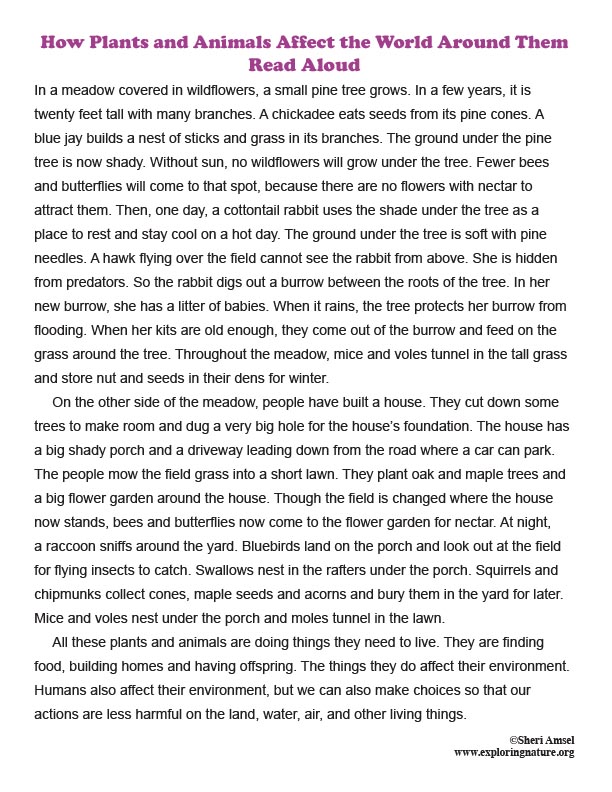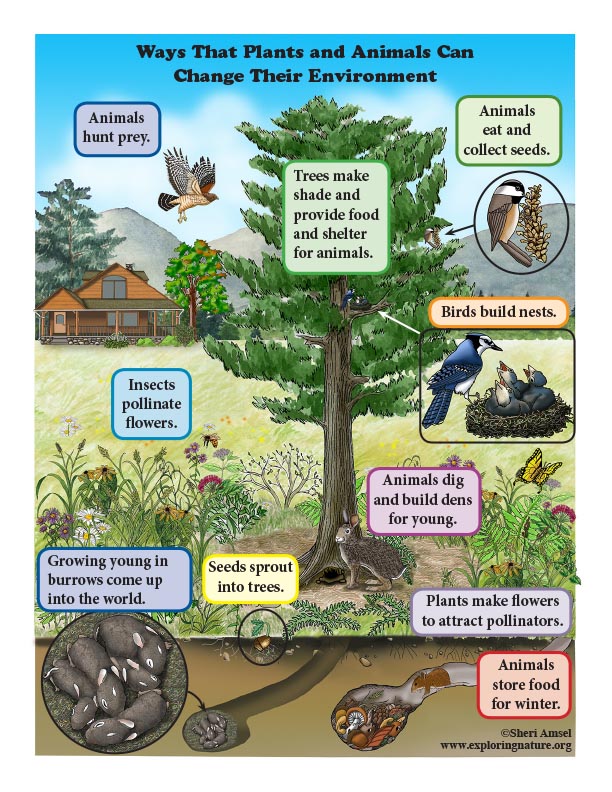

ESS2.E: Biogeology
• Plants and animals can change their environment. (K-ESS2-2)
ESS3.C: Human Impacts on Earth Systems
• Things that people do to live comfortably can affect the world around them. But they can make choices that reduce their impacts on the land, water, air, and other living things. (secondary to K-ESS2-2)
Read to students the "How Plants and Animals Affect the World Around Them" essay and study and talk about the accompanying graphic poster "Ways the Plants and Animals can Change Their Environment."
Talk about how plants and animals affect other things and give some examples (e.g. squirrels bury acorns to save for winter annd some of them grow into oak trees, litter gets washes into storm drains into the ocean and affects wildife, spraying for mosquitoes kills honey bees that pollinate the flowers of apple trees, etc. etc.).
Then go on the other activities in the Biogeology and Human Impacts Unit below:
Ways That Plants and Animals Can Change Their Environment - Diagrams
Ways That Plants and Animals Change Their Environment - Coloring Page
How Do Plants and Animals Change Their Environment? Critical Thinking Activity
Plants and Animals and Their Environment - Matching
Human Impacts on Earth Systems - Poster
How Do Humans Affect Their Environment? Critical Thinking
Humans Affect Earth Systems - Coloring Page
Humans Affect Their Environment - Poster Making Activity
When you research information you must cite the reference. Citing for websites is different from citing from books, magazines and periodicals. The style of citing shown here is from the MLA Style Citations (Modern Language Association).
When citing a WEBSITE the general format is as follows.
Author Last Name, First Name(s). "Title: Subtitle of Part of Web Page, if appropriate." Title: Subtitle: Section of Page if appropriate. Sponsoring/Publishing Agency, If Given. Additional significant descriptive information. Date of Electronic Publication or other Date, such as Last Updated. Day Month Year of access < URL >.
Amsel, Sheri. "How Plants and Animals Affect the Environment (Kindergarten) - Reading and Poster" Exploring Nature Educational Resource ©2005-2024. December 14, 2024
< http://www.exploringnature.org/db/view/How-Plants-and-Animals-Affect-the-Environment-Kindergarten-Reading-and-Poster >

